5.1 Gramática: The verb ESTAR (to be)
5.1 Gramática: The verb ESTAR (to be)
| Singular | Plural | ||
| Yo | estoy | Nosotros (as) | estamos |
| Tú | estás | Vosotros (as) | estáis |
| Él, Ella, Usted | está | Ellos, Ellas, Ustedes | están |
The following are the most common uses of the verb ESTAR (To be):
- Location = Nosotros estamos en la universidad (We are at the university)
- Conditions (temporary) = Estoy cansado / cansada (I am tired)
- Emotions = ¿Estás contento / contenta? (Are you happy?)
A. PREPOSITIONS AND ADVERBS TO DESCRIBE THE LOCATION OF PEOPLE OR THINGS
| al lado de | next to | delante de | in front of |
| a la derecha de | to the right of | detrás de | behind |
| a la izquierda de | to the left of | en | in; on |
| al norte de |
To the North |
al sur de |
to the South |
| allá | over there | encima de | on top of |
| allí | there | entre | between |
| aquí / acá | here | en medio de | between |
| arriba de | on top of; above | lejos de | far from |
| cerca de | near | sin | without |
| debajo de | below | sobre | on; over |
Ejemplos: La profesora está delante de la clase.
The professor is in front of the class.
El restaurante está cerca de la universidad.
The restaurant is near the university.
Note: It is common to use the verb QUEDAR to refer to the location of people or things.
El restaurante QUEDA cerca de aquí. ¿Dónde QUEDA la farmacia?
The restaurant is close to here. Where is the pharmacy?
 ACTIVIDAD # 1
ACTIVIDAD # 1
Location. Write sentences with the verb ESTAR according to each person or place.
1. Marta / en la casa. _________________________________.
2. Los estudiantes / en la clase. __________________________.
3. Yo / en el trabajo (work place). _________________________.
4. Puerto Vallarta / México. _____________________________.
5. ¿Dónde / la librería? ________________________________.
 ACTIVIDAD # 2
ACTIVIDAD # 2
¡Ahí no está! (It is not there!) Look at the image and pay close attention to the position of each of the objects. All the statements below are incorrect. Rewrite each sentence with the correct preposition.
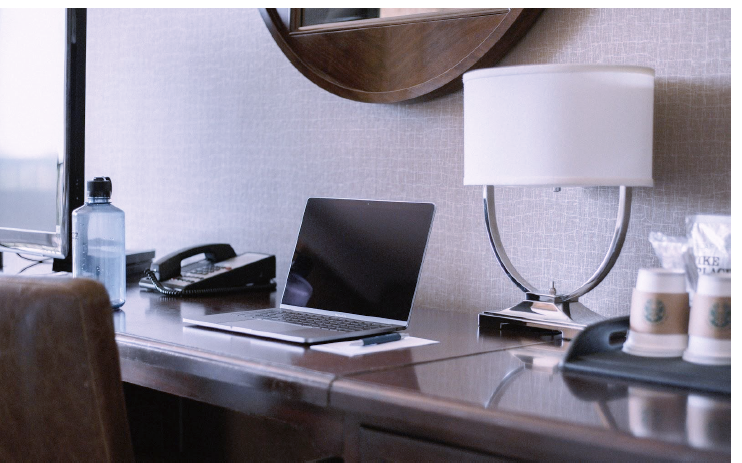
1. La computadora está al lado del escritorio. ____________________.
2. El teléfono está encima de la lámpara. _______________________.
3. La silla está detrás del escritorio. __________________________.
4. La botella (bottle) de agua está lejos del teléfono._________________.
5. El espejo (mirror) está debajo del escritorio. ____________________.
6. La lámpara (lamp) está sobre la silla. _________________________.
7. La pluma está entre la computadora y el teléfono._________________.
¡Inténtalo!
B. ESTAR with ADJECTIVES THAT DESCRIBE EMOTIONS AND TEMPORARY CONDITIONS
They need to agree with nouns (masculine and feminine)
| Abierto (a) | Open | Equivocado (a) | Wrong |
| Aburrido (a) | Bored | Feliz | Happy |
| Alegre | Happy | Limpio (a) | Clean |
| Avergonzado (a) | Embarrassed | Listo (a) | Ready |
| Cansado (a) | Tired | Nervioso (a) | Nervous |
| Cerrado (a) | Closed | Ocupado (a) | Busy |
| Cómodo (a) | Comfortable | Ordenado (a) | Organized |
| Confundido (a) | Confused | Orgulloso (a) | Proud |
| Contento (a) | Content, Happy | Preocupado (a) por | Worried about |
| Desordenado (a) | Messy, Disorganized | Rico (a) | Tasty |
| Emocionado (a) |
Excited |
Seguro (a) | Sure, Safe |
| Enamorado (a) de | In love with | Sucio (a) | Dirty |
| Enfermo (a) |
Sick |
Triste | Sad |
| Enojado (a) / enfadado (a) |
Angry | Tranquilo (a) | Peaceful, Quiet, Calm |
(Note: this also appears in the vocabulary section)
NOTA: Two common expressions that you can use with ESTAR to express your mood is ESTAR de buen humor (to be in a good mood) and ESTAR de mal humor (to be in a bad mood).
 ACTIVIDAD # 1
ACTIVIDAD # 1
Opuestos. Select from Column B the opposite adjective of Column A.
A B
- Nuevo ___ sucio
- Abierto ___ feo
- Contento ___ desordenado
- Limpio ___ viejo
- Cómodo ___ cerrado
- Bueno ___ intranquilo
- Ordenado ___ pobre
- Tranquilo ___ triste
- Rico ___ incómodo
- Bonito ___ malo
¡Inténtalo!
 ACTIVIDAD # 2
ACTIVIDAD # 2
Describir. Describe these people and things. ESTAR + adjectives
| enamorados triste contento limpia nerviosa aburrido sucia |
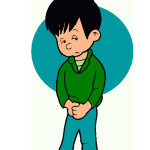 1. El niño ___________.
1. El niño ___________.
 2. Pepe y Lucia___________.
2. Pepe y Lucia___________.
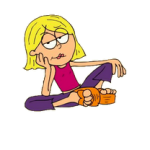 3. La chica ______________.
3. La chica ______________.
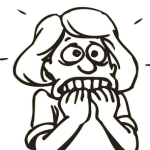 4. La señora__________.
4. La señora__________.
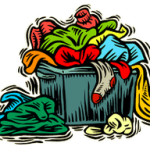 5. La ropa___________.
5. La ropa___________.
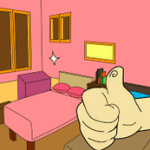 6. La habitación __________.
6. La habitación __________.
 ACTIVITY # 3
ACTIVITY # 3
Entrevista: ¿Cómo estás? With a compañer@ take turns asking and answering the following questions, and follow the example.
Ejemplo: E1: ¿Cuándo tienes mucho trabajo, ¿cómo estás?
E2: Cuando TENGO mucho trabajo, ESTOY estresada.
- Los lunes por la mañana, ¿cómo estás?
- Los viernes por la noche, ¿cómo estás?
- Cuando tienes un quiz, ¿cómo estás?
- Cuando no entiendes español, ¿cómo estás?
- Cuando estás con tu familia, ¿cómo estás?
- Cuando llueve, ¿cómo estás?
- Cuando sacas (you get) una A en tu quiz de español, ¿cómo estás?
- Antes de una cita (before a date), ¿cómo estás?
- Cuando no duermes bien, ¿cómo estás?
 ACTIVIDAD # 4
ACTIVIDAD # 4
¿Qué tipo de música escuchas? Write down the type of music you listen to when you feel the following ways:
Ejemplo: ¿Qué tipo de música escuchas cuando estás triste?
CUANDO ESTOY TRISTE. . . Escucho música latina.
CUANDO ESTOY. . . Escucho.. .
| alternativa | boleros | clásica | gospel | blues |
| rock | jazz | bachata | rock pesado | punk |
| country | R & B | techno | folklórica | reggaeton |
| salsa | hip hop | pop | banda | mariachi |
- Contento/a
- Frustrado/a
- Enamorado/a
- Triste

